Abstract
A repeated acquisition design was used to study the effects of instructions and differential reinforcement on the performance of complex chains by undergraduates. The chains required responding on a series of keys that corresponded to characters that appeared on a monitor. Each day, subjects performed a new chain in a learning session and later relearned the same chain in a test session. Experiment 1 replicated previous research by showing that instructional stimuli paired with the correct responses in the learning sessions, combined with differential reinforcement in both learning and test sessions, resulted in stimulus control by the characters in each link. Experiment 2 separated the effects of instructional stimuli and differential reinforcement, and showed that stimulus control by the characters could be established solely by differential reinforcement during the test sessions. Experiment 3 showed that when a rule specified the relation between learning and test sessions, some subjects performed accurately in the test sessions without exposure to any differential consequences. This rule apparently altered the stimulus control properties of the characters much as did differential reinforcement during testing. However, compared to differential reinforcement, the rule established stimulus control more quickly.
Keywords: rule-governed behavior, contingency-shaped behavior, stimulus control, repeated acquisition, key press, adults
Full text
PDF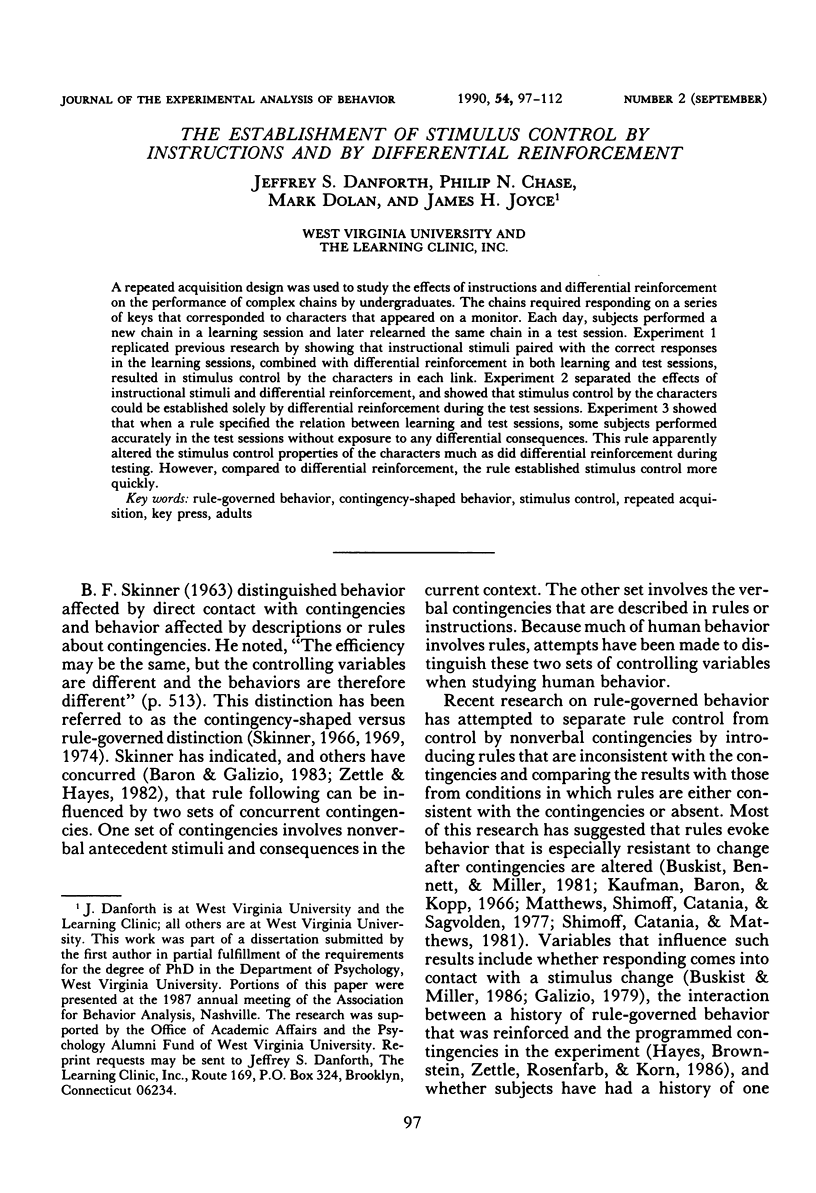
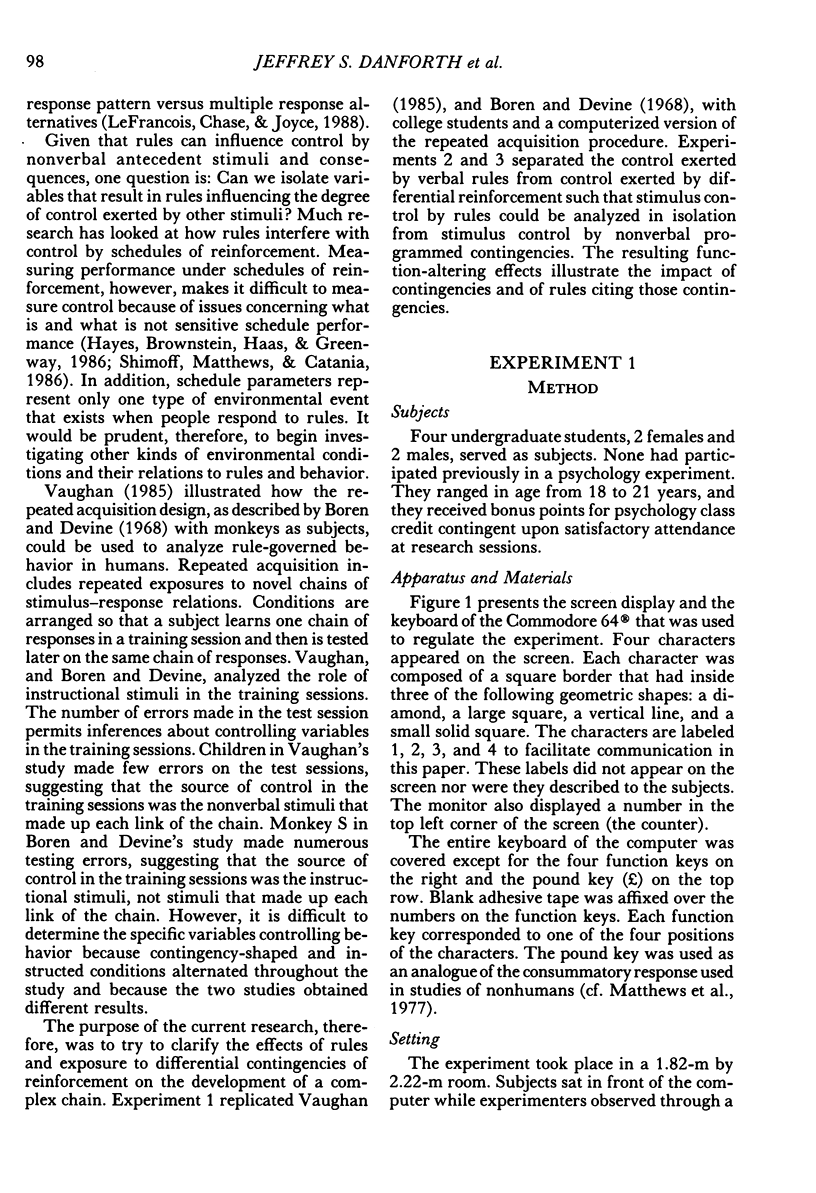
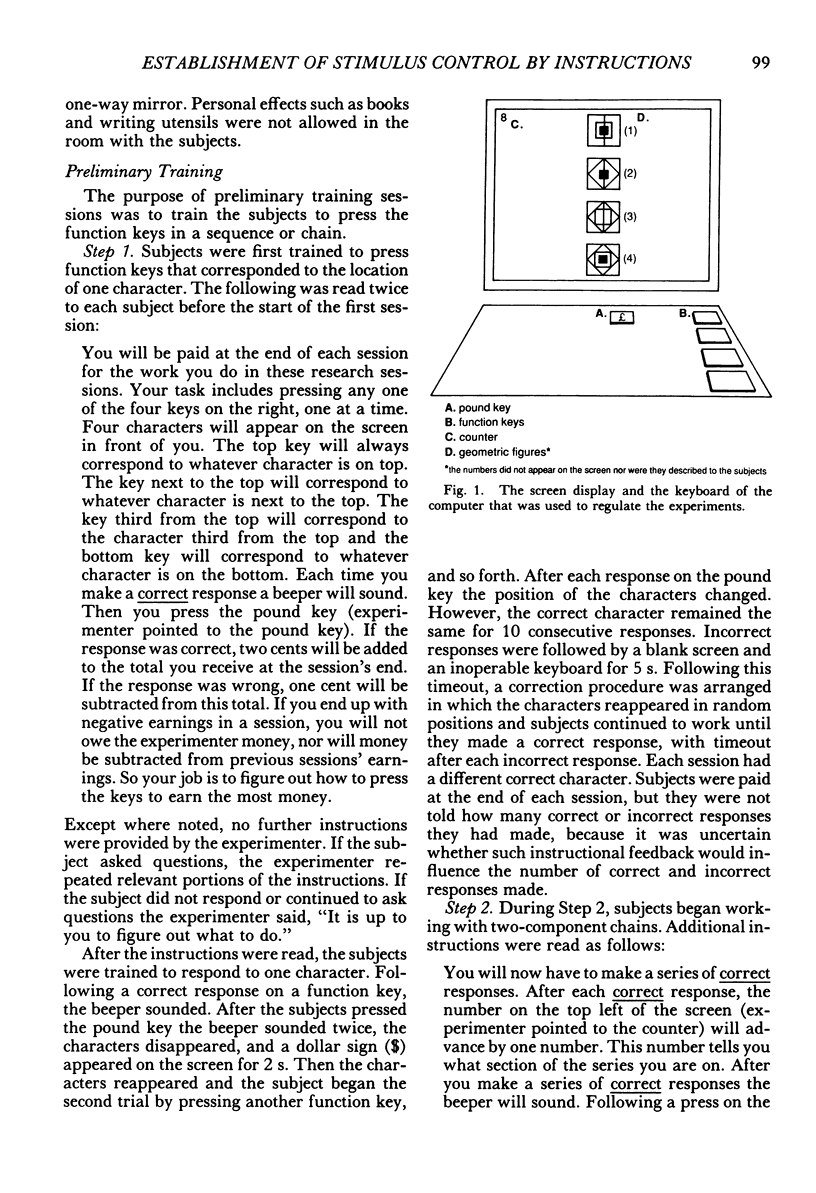
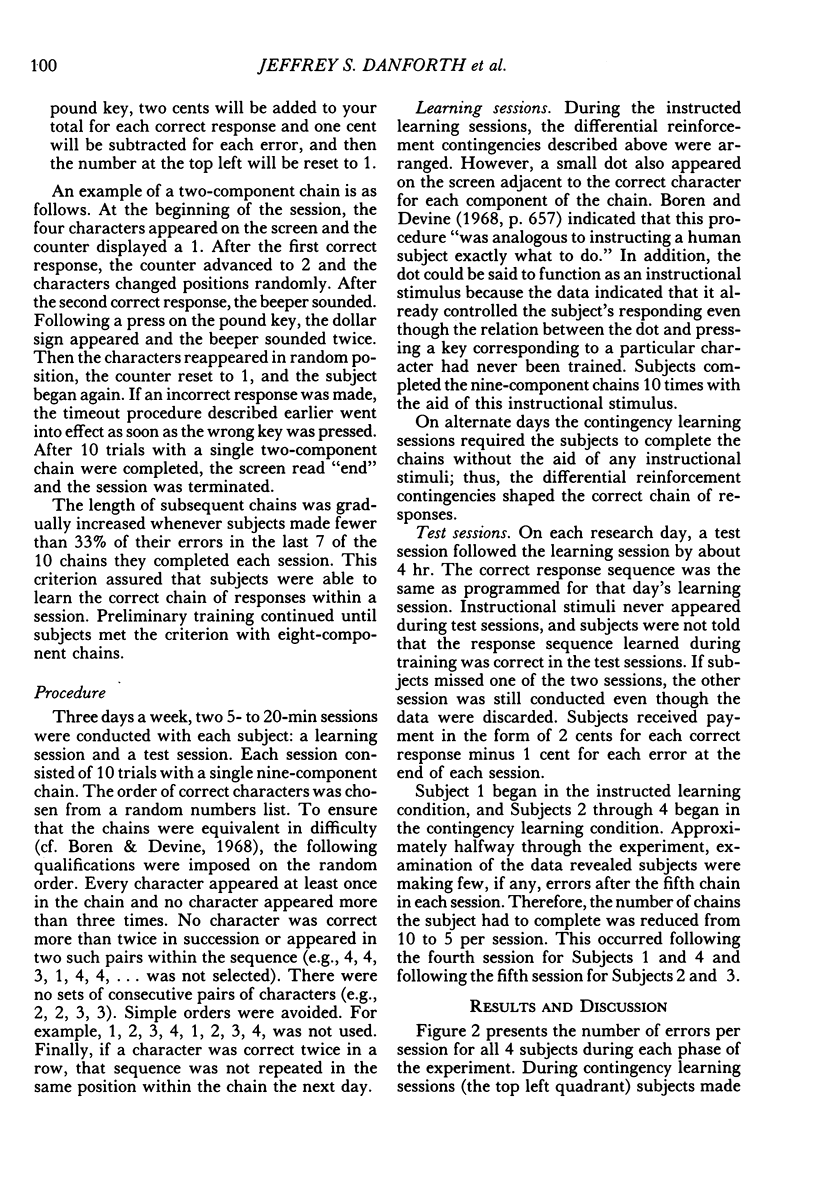
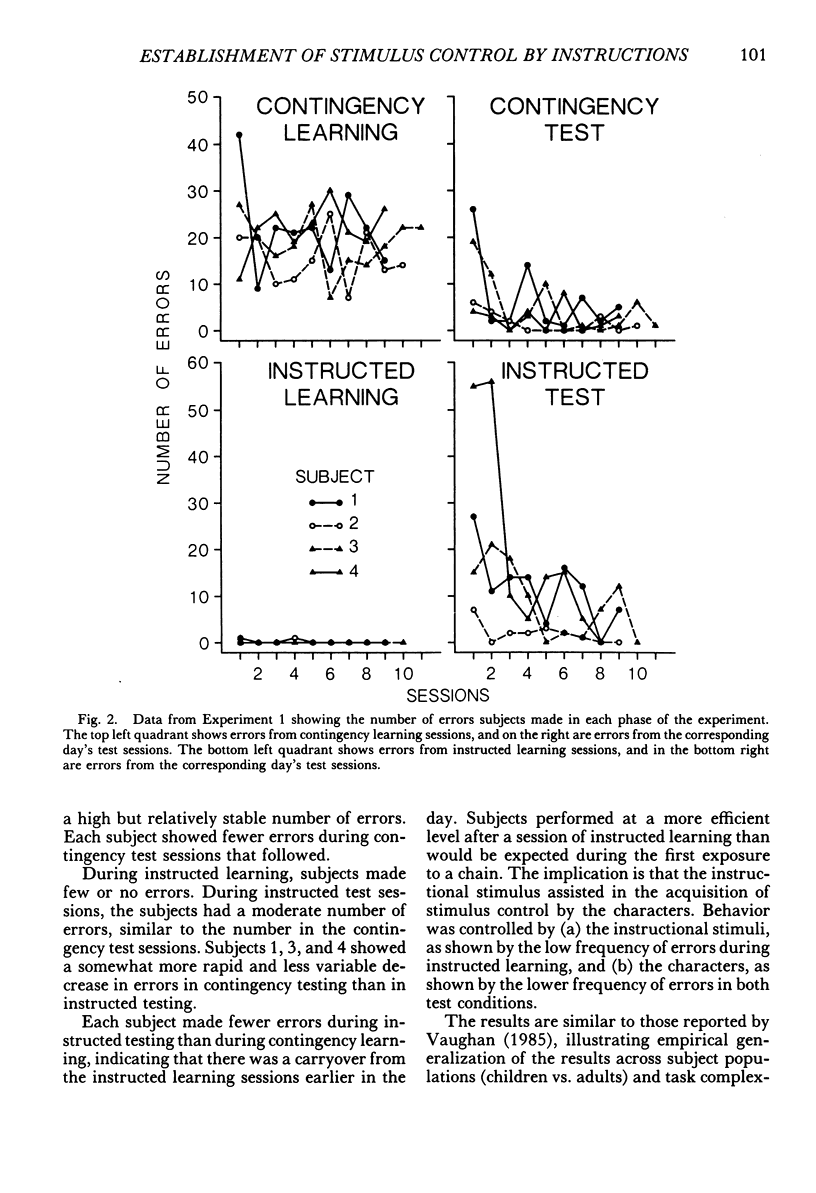
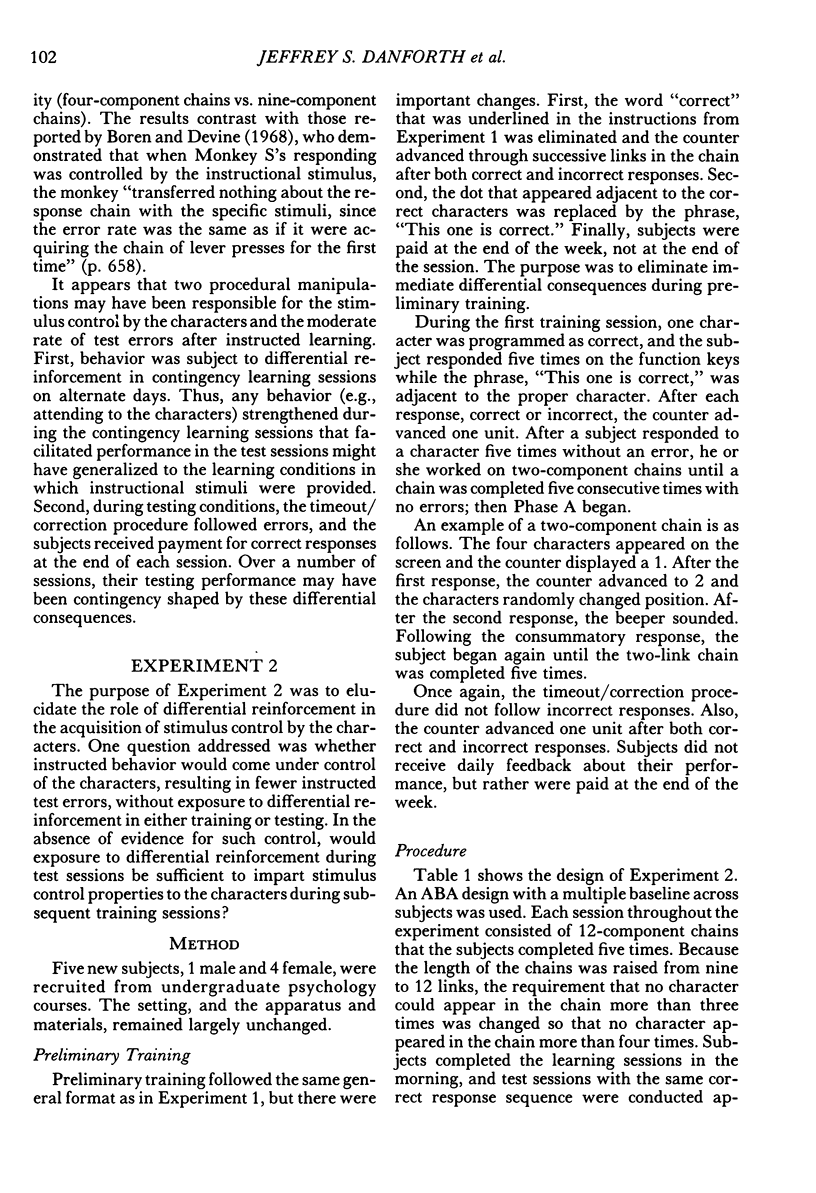
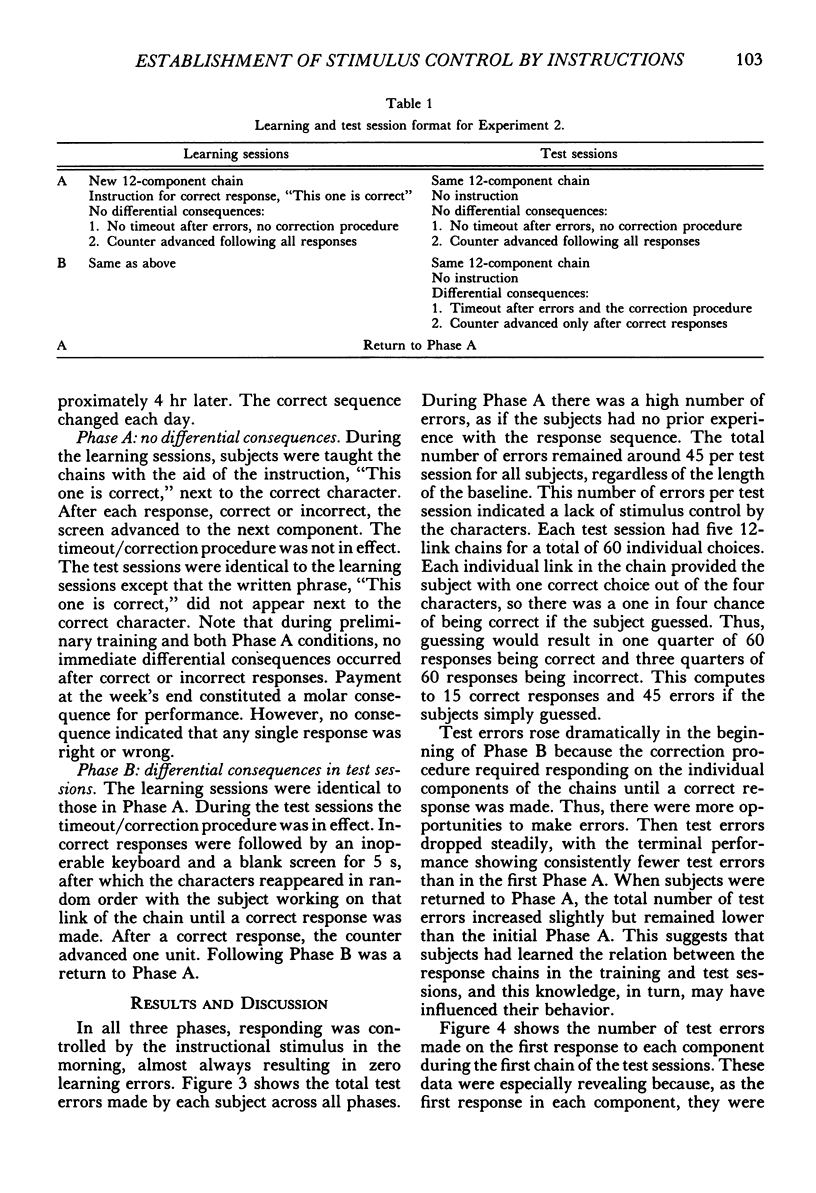
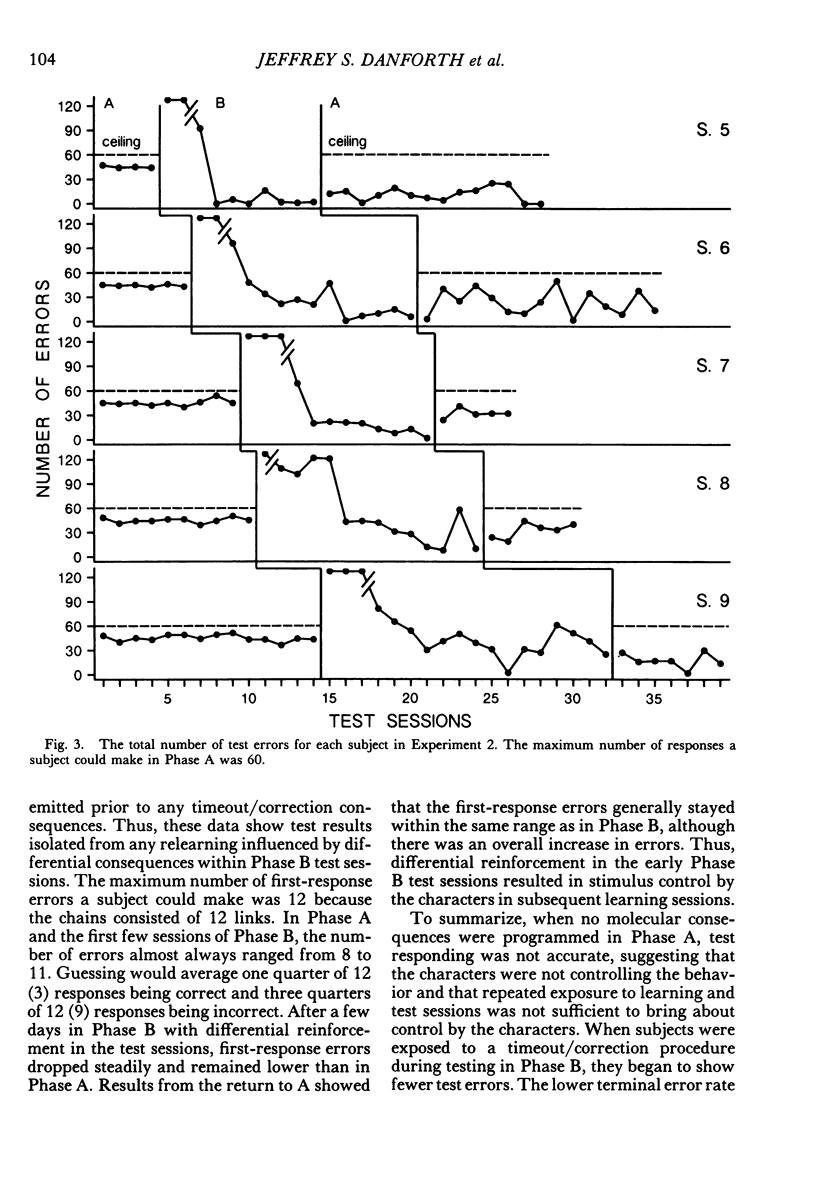
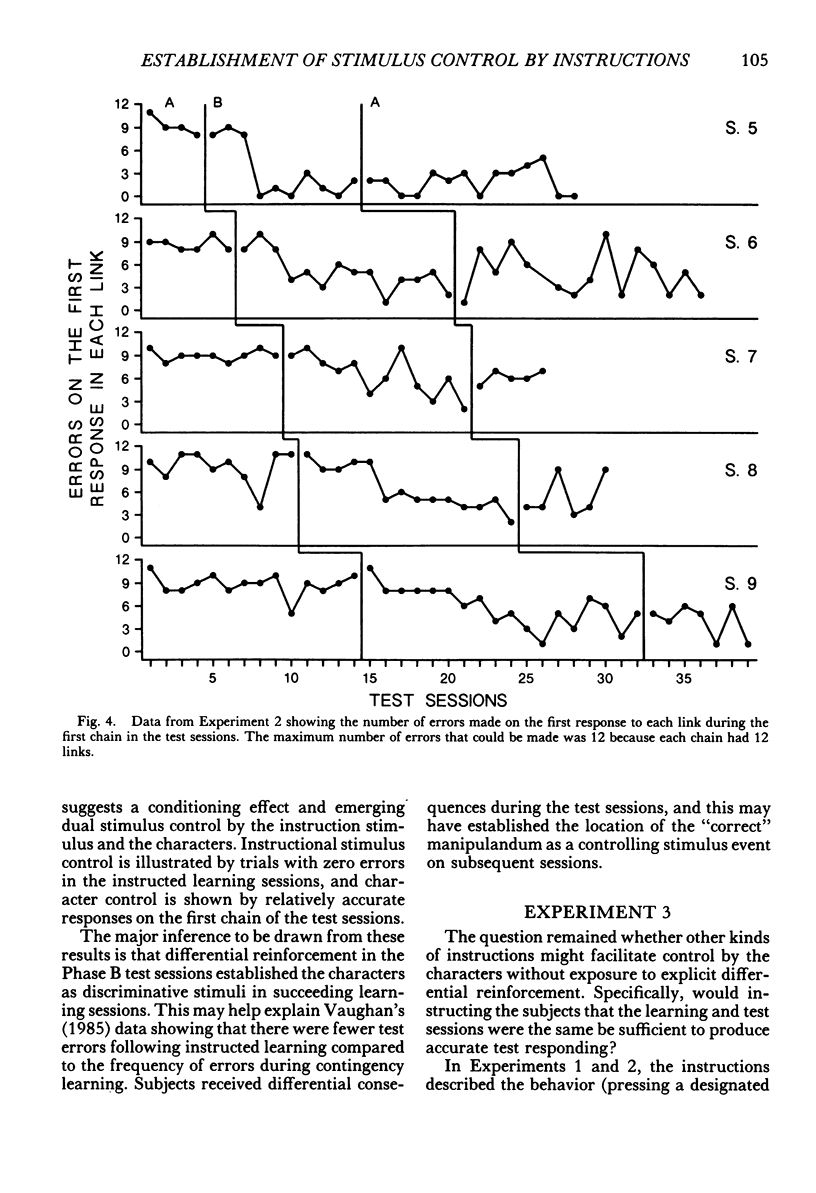
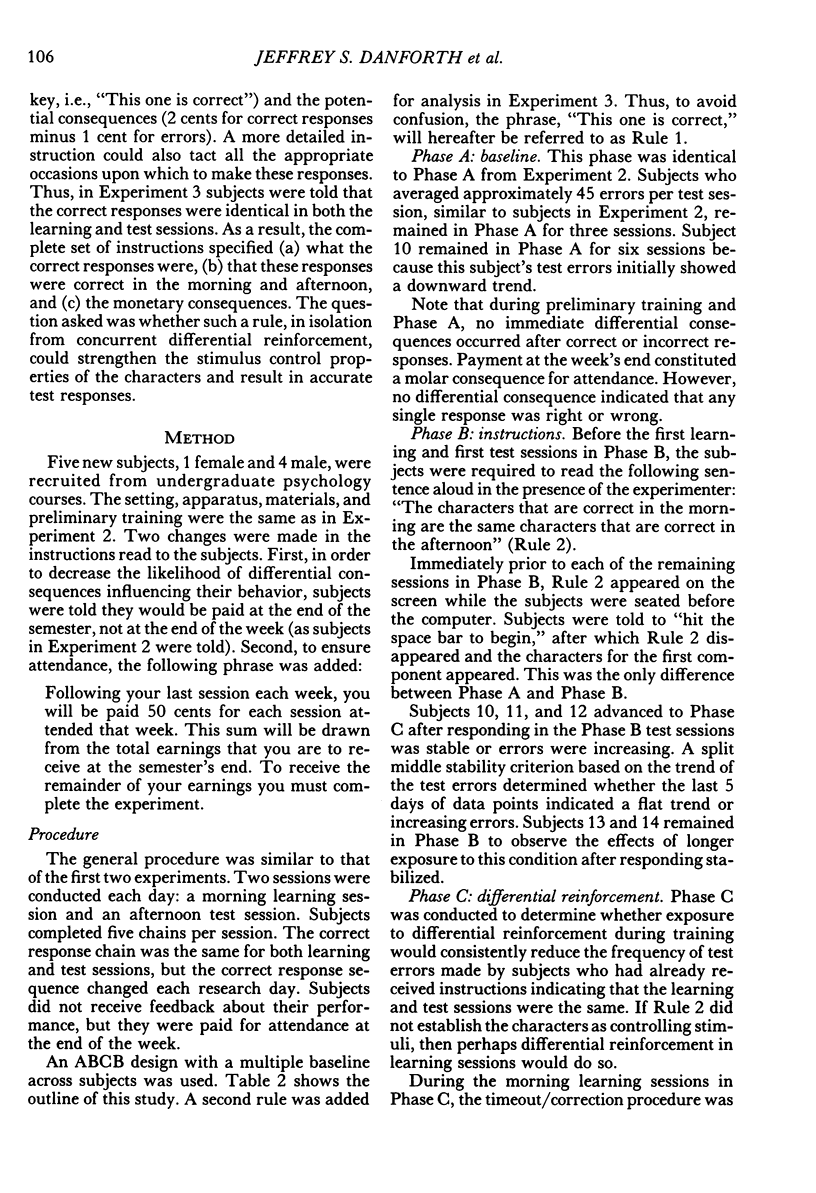
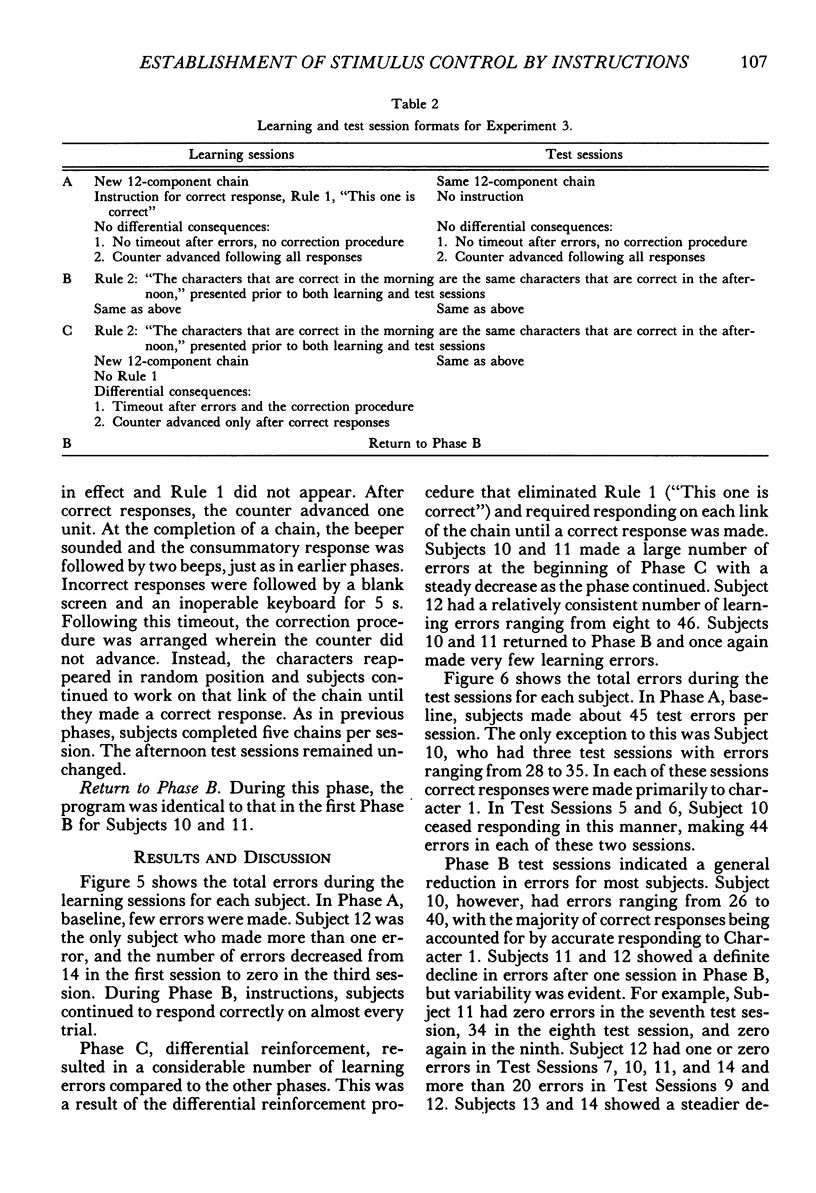
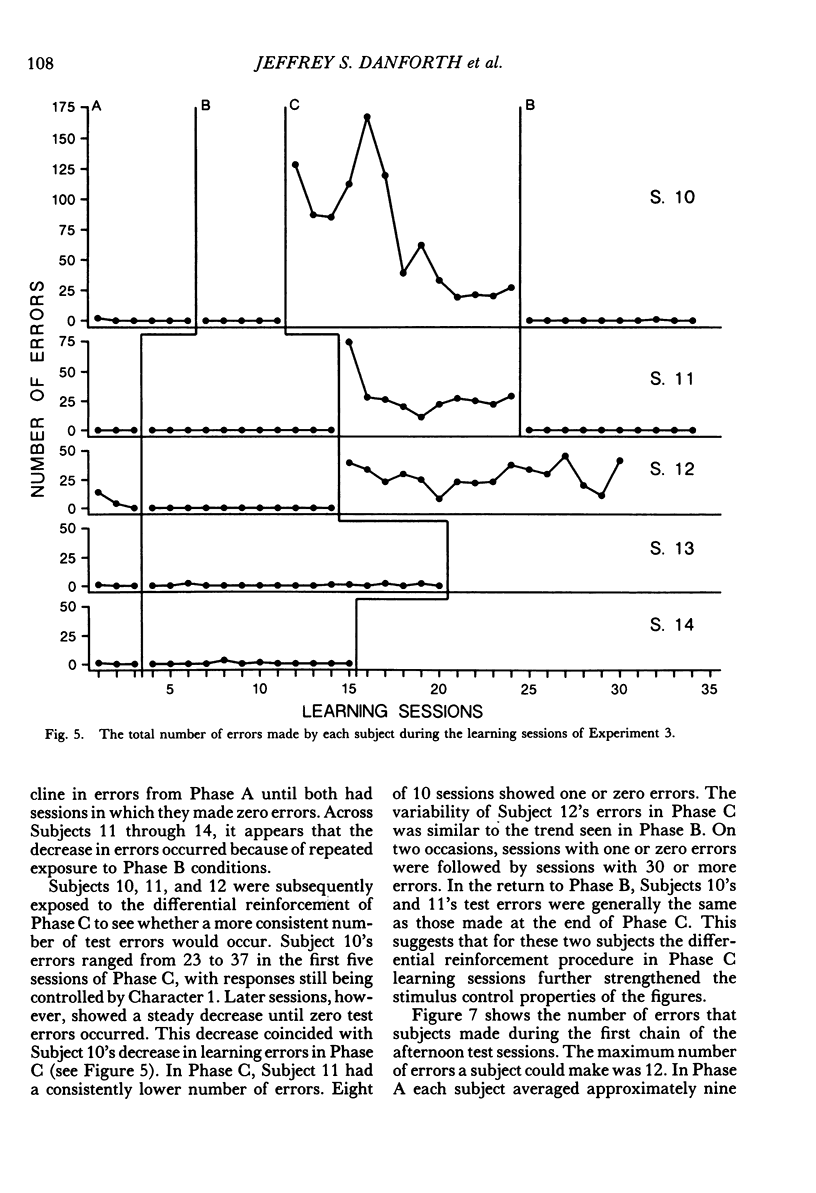
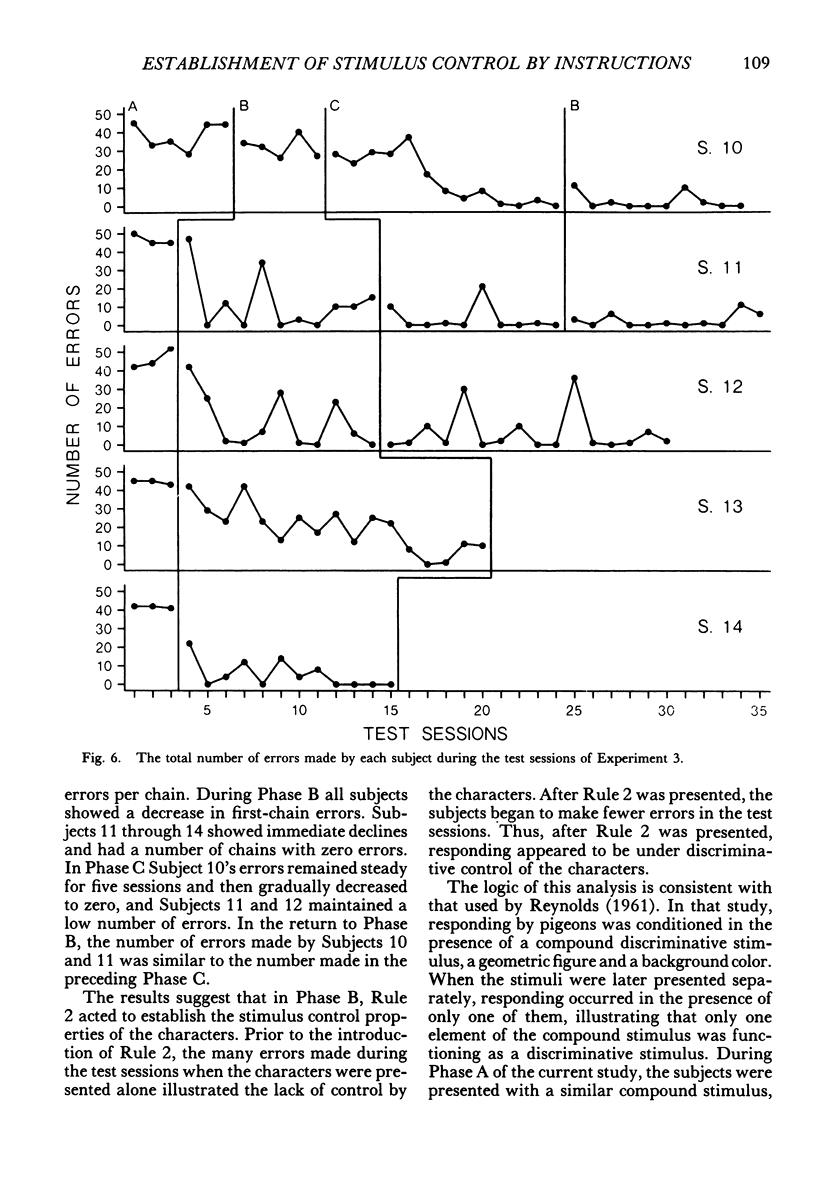
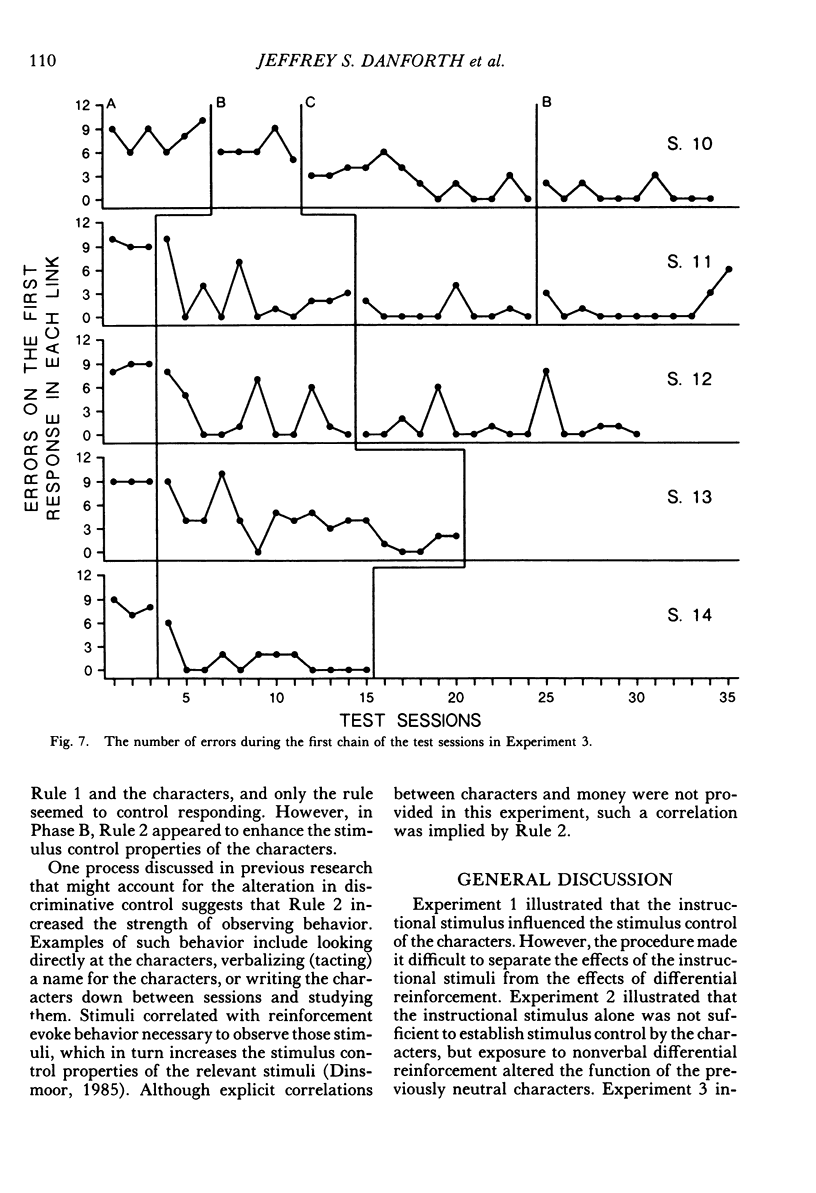
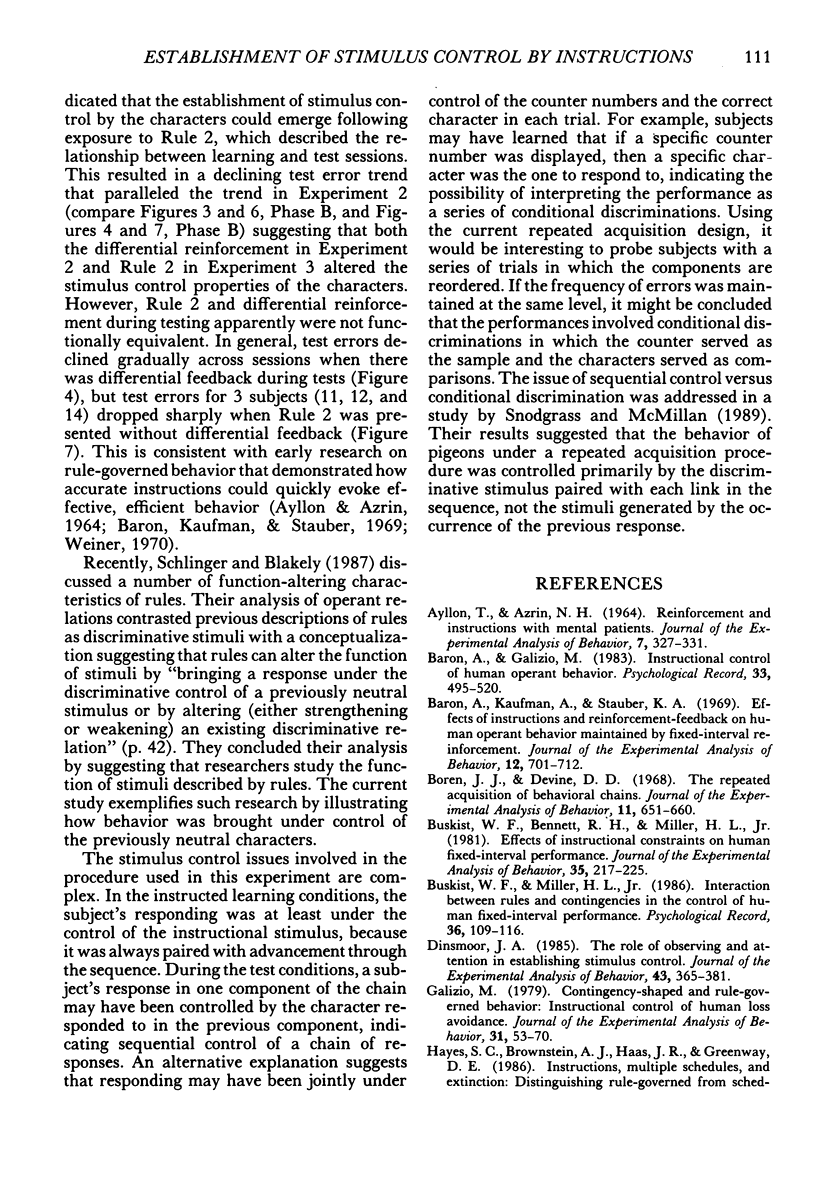
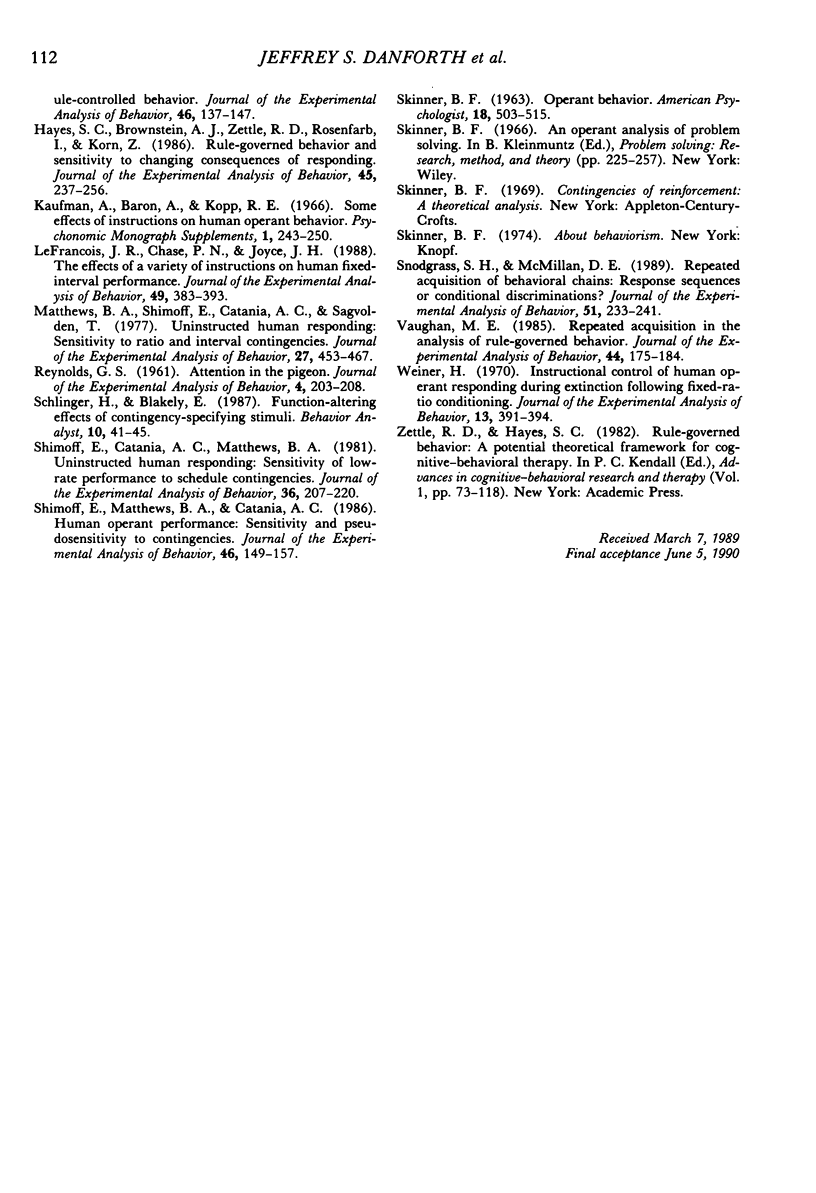
Selected References
These references are in PubMed. This may not be the complete list of references from this article.
- AYLLON T., AZRIN N. H. REINFORCEMENT AND INSTRUCTIONS WITH MENTAL PATIENTS. J Exp Anal Behav. 1964 Jul;7:327–331. doi: 10.1901/jeab.1964.7-327. [DOI] [PMC free article] [PubMed] [Google Scholar]
- Baron A., Kaufman A., Stauber K. A. Effects of instructions and reinforcement-feedback on human operant behavior maintained by fixed-interval reinforcement. J Exp Anal Behav. 1969 Sep;12(5):701–712. doi: 10.1901/jeab.1969.12-701. [DOI] [PMC free article] [PubMed] [Google Scholar]
- Boren J. J., Devine D. D. The repeated acquisition of behavioral chains. J Exp Anal Behav. 1968 Nov;11(6):651–660. doi: 10.1901/jeab.1968.11-651. [DOI] [PMC free article] [PubMed] [Google Scholar]
- Buskist W. F., Bennett R. H., Miller H. L. Effects of instructional constraints on human fixed-interval performance. J Exp Anal Behav. 1981 Mar;35(2):217–225. doi: 10.1901/jeab.1981.35-217. [DOI] [PMC free article] [PubMed] [Google Scholar]
- Dinsmoor J. A. The role of observing and attention in establishing stimulus control. J Exp Anal Behav. 1985 May;43(3):365–381. doi: 10.1901/jeab.1985.43-365. [DOI] [PMC free article] [PubMed] [Google Scholar]
- Galizio M. Contingency-shaped and rule-governed behavior: instructional control of human loss avoidance. J Exp Anal Behav. 1979 Jan;31(1):53–70. doi: 10.1901/jeab.1979.31-53. [DOI] [PMC free article] [PubMed] [Google Scholar]
- Hayes S. C., Brownstein A. J., Haas J. R., Greenway D. E. Instructions, multiple schedules, and extinction: Distinguishing rule-governed from schedule-controlled behavior. J Exp Anal Behav. 1986 Sep;46(2):137–147. doi: 10.1901/jeab.1986.46-137. [DOI] [PMC free article] [PubMed] [Google Scholar]
- Hayes S. C., Brownstein A. J., Zettle R. D., Rosenfarb I., Korn Z. Rule-governed behavior and sensitivity to changing consequences of responding. J Exp Anal Behav. 1986 May;45(3):237–256. doi: 10.1901/jeab.1986.45-237. [DOI] [PMC free article] [PubMed] [Google Scholar]
- Lefrancois J. R., Chase P. N., Joyce J. H. The effects of a variety of instructions on human fixed-interval performance. J Exp Anal Behav. 1988 May;49(3):383–393. doi: 10.1901/jeab.1988.49-383. [DOI] [PMC free article] [PubMed] [Google Scholar]
- Matthews B. A., Shimoff E., Catania A. C., Sagvolden T. Uninstructed human responding: sensitivity to ratio and interval contingencies. J Exp Anal Behav. 1977 May;27(3):453–467. doi: 10.1901/jeab.1977.27-453. [DOI] [PMC free article] [PubMed] [Google Scholar]
- REYNOLDS G. S. Attention in the pigeon. J Exp Anal Behav. 1961 Jul;4:203–208. doi: 10.1901/jeab.1961.4-203. [DOI] [PMC free article] [PubMed] [Google Scholar]
- Shimoff E., Catania A. C., Matthews B. A. Uninstructed human responding: Sensitivity of low-rate performance to schedule contingencies. J Exp Anal Behav. 1981 Sep;36(2):207–220. doi: 10.1901/jeab.1981.36-207. [DOI] [PMC free article] [PubMed] [Google Scholar]
- Shimoff E., Matthews B. A., Catania A. C. Human operant performance: Sensitivity and pseudosensitivity to contingencies. J Exp Anal Behav. 1986 Sep;46(2):149–157. doi: 10.1901/jeab.1986.46-149. [DOI] [PMC free article] [PubMed] [Google Scholar]
- Snodgrass S. H., McMillan D. E. Repeated acquisition of behavioral chains: response sequences or conditional discriminations? J Exp Anal Behav. 1989 Mar;51(2):233–241. doi: 10.1901/jeab.1989.51-233. [DOI] [PMC free article] [PubMed] [Google Scholar]
- Vaughan M. E. Repeated acquisition in the analysis of rule-governed behavior. J Exp Anal Behav. 1985 Sep;44(2):175–184. doi: 10.1901/jeab.1985.44-175. [DOI] [PMC free article] [PubMed] [Google Scholar]
- Weiner H. Instructional control of human operant responding during extinction following fixed-ratio conditioning. J Exp Anal Behav. 1970 May;13(3):391–394. doi: 10.1901/jeab.1970.13-391. [DOI] [PMC free article] [PubMed] [Google Scholar]


